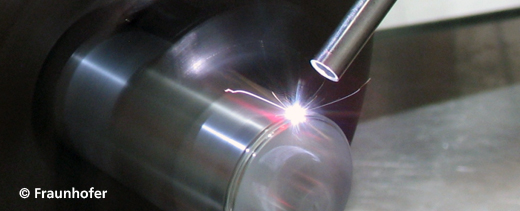Overview
Laser micro welding is conducted using a combination of small focus spot size (< 50 µm) and high peak power. Both continuous wave single-mode fiber laser and pulsed Nd:YAG laser sources are available at Fraunhofer for seam and spot welding applications.
Weld penetration depth, surface width and interface width are precisely controlled by the energy density, peak power intensity and duty cycle. Pulse shaping is used to prevent defects at weld start and stop positions. Proper inert shielding atmosphere is provided to meet stringent weld requirements for high quality.
Very fine weld feature (<50 µm) sizes can be achieved in thin materials (down to 25 µm thickness) with reasonable gap tolerance. Both similar and dissimilar metals have been welded successfully. Very high welding speeds (> 60 m/min) have been achieved for welding of thin stainless steel materials.
Advantages
- Welding of heat sensitive parts
- Small heat affected zone and minimal part distortion
- Very small weld sizes
- Welding of dissimilar metals
- Hermetic sealing
 Fraunhofer USA Center Midwest CMW
Fraunhofer USA Center Midwest CMW